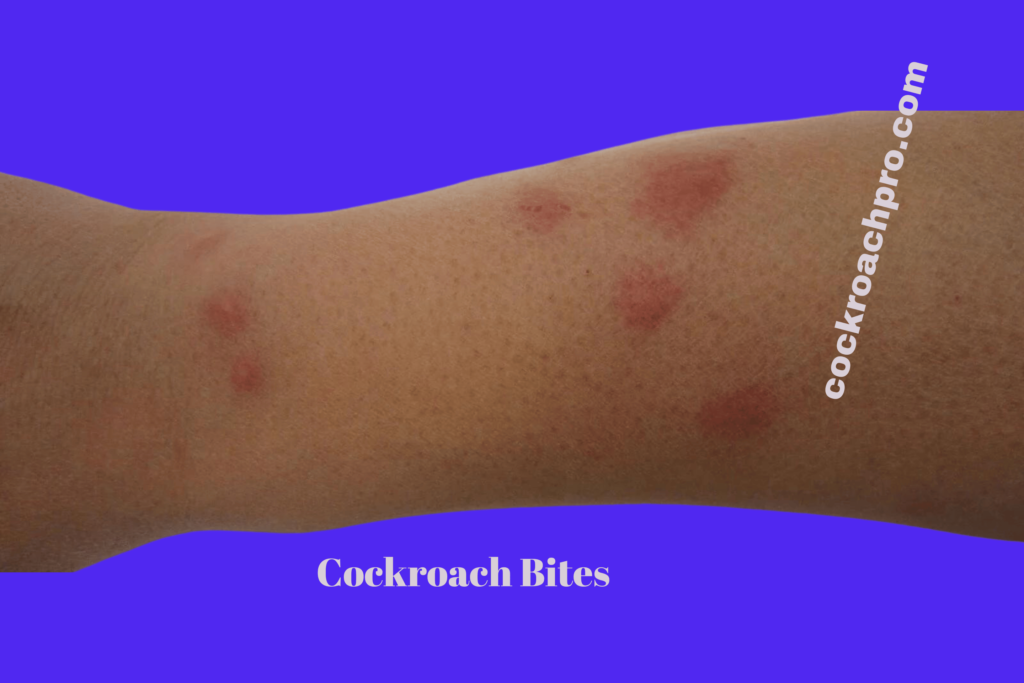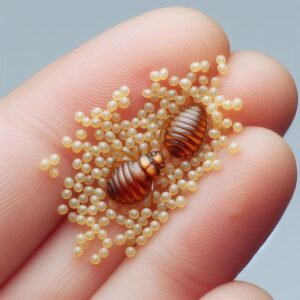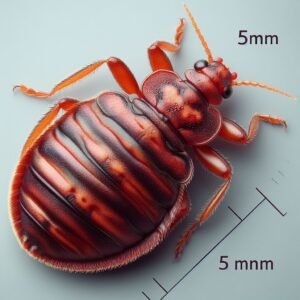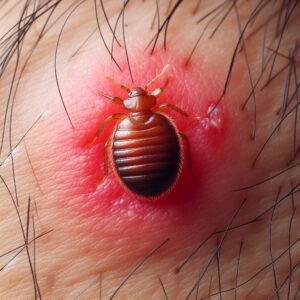No Signs of Bed Bugs But I Have Bites! It can be deeply troubling to wake up with mysterious bites, yet find no clear signs of bed bugs in your bedroom.
However, there are several reasons why you may have bites but no evidence of bed bugs. Before assuming the worst, it is important to thoroughly inspect your sleeping areas and understand common bite sources.
This article explores why you may have bites with no obvious indicators of bed bugs and provides inspection tips to unearth an infestation.

What is a bed bug bite and what does it look like?
A bed bug bite manifests as a small, red, itchy bump on the skin, resulting from the insect’s feeding. It typically appears as a raised welt or cluster of welts, often in a line or cluster on areas of exposed skin like the arms, face, neck, or shoulders.
Recommended post Are bed bugs dangerous?
While reactions vary among individuals, the bites can cause irritation and discomfort. It’s essential to distinguish bed bug bites from those of other insects to implement appropriate control measures and seek necessary medical attention if severe reactions occur.
What is biting me if not bed bugs?
If you’re experiencing bites but not from bed bugs, several other pests or factors could be responsible. Fleas, mosquitoes, spiders, mites, and ticks are common culprits.
Additionally, skin conditions like hives, dermatitis, or allergic reactions to certain foods or medications can mimic insect bites. Consultation with a healthcare professional or pest control expert can help identify the cause accurately.
Reasons for Bites With No Signs of Bed Bugs
1. Delayed Skin Reactions That Allow Bed Bugs to Move On
One of the frustrating realities about bed bug bites is that the skin reaction is often delayed 24 to 48 hours. So by the time bites appear, the instigating bed bugs may have already left the area.
Their small size and speed allow bed bugs hiding in tiny cracks and crevices to take a blood meal undetected, before returning to harborages unknown to the victim. So while your skin reacts, the evidence slips away.
2. New Bed Bug Introduction Too Recent to Leave Traces
It takes time for bed bugs to multiply to numbers that produce fecal spotting, cast skins, egg cases, and live bugs that signal a more established infestation.
If you have just a few hitchhiking bed bugs that found their way into your home, they can bite without yet creating the more obvious signs during resting periods. Within several weeks though, their breeding would make them more apparent.
3. Expert Hiders Meaning Few Early Signs of Bed Bugs
Bed bugs are champion hiders and can squeeze into miniscule cracks in bed frames, furniture, and room perimeters.
Unlike cockroaches that feed then linger in the open, bed bugs prefer to hide near human resting areas, emerging briefly to feed, then retreating.
Their thin, flat bodies allow them to conceal themselves in areas that are difficult to sight-inspect. Careful tools and methods are required to coax them out.
4. Foraging Bed Bugs Biting During Daytime Hours
When bed bug populations are low or newly established, they may bite hosts during daylight hours when the victim is reading, watching TV, or lounging in bed before sleeping.
While bed bugs typically prefer to feed at night, they are certainly capable of taking a meal during the daytime if extremely hungry. Their bites can then seem random and mysterious.
5. Human Sensitivity and Reactions Varying to Bed Bug Bites
You may have greater sensitivity than a housemate to the salivary proteins of bed bugs. Some victims develop itchy, swollen hive-like reactions upon being bitten while others show small marks or welts.
One person may have severe allergic reactions while someone else sleeping inches away shows no reaction at all. The variance in bite response makes comparison difficult.
6. Other Biting Insects Misidentified as Bed Bugs
It is easy to mistake bites from other insects for those of bed bugs. Biting mites, fleas, mosquitoes, bats and even spiders all occasionally bite people during the night. Rash conclusions lead to false accusations, so properly identifying bite sources through thoughtful inspection and assessment techniques is key.
7. Bed Bug Introduction Through Travel
If you recently stayed in a hotel or vacation rental accommodation, it is possible you transported bed bugs into your home through luggage or belongings.
Bed bug infestations have dramatically increased throughout North America and globally. Hotels, hostels, and shared living spaces all provide opportunities for hitchhiking bugs to find new hosts.
8. Hitchhiking Bed Bugs Coming From Neighbors
Bed bugs can travel surprisingly long distances to feed, and may migrate from adjacent apartments along pipes, electrical conduits, or structural cracks.
Renters, condo owners, dorm residents, and other multi-family housing occupants often suffer bed bug spread through no fault of their own. Hungry bugs just follow carbon dioxide and warmth to tap a blood meal.
9. Bites Arising From Secondary Infestation Sites
Where bed bugs breed and congregate away from sleeping areas is considered a “secondary infestation site”.
This could be living room cushions, office spaces, vehicles, storage areas, or furniture moved from the bedroom. Bites then come from stray foraging bed bugs, but inspecting your sleeping area alone does not reveal issues.
10. Are They Really Bed Bug Bites?
Skin irritation is often mistaken as bed bug bites when other root causes are to blame.
Things like detergent reactions, fungal infections, scrapes and scabs from unconscious scratching, rashes, and other problems can mimic bite marks. Proper diagnosis and confirmation of the problem is key.

What if I have bed bug bites but no evidence?
If you’re experiencing bed bug-like bites but find no evidence of bed bugs, it’s essential to thoroughly inspect your surroundings. While bed bugs can be challenging to detect, look for signs like blood stains on bedding, molted skins, or fecal spots.
If no evidence is found, consider other potential causes such as fleas, mites, or allergic reactions. Consulting a pest control expert for a comprehensive inspection can help identify the issue accurately.
Tips for Locating Evidence of Bed Bugs
If thoroughly assessing your bedroom still uncovers no clear indicators of bed bugs after bites appear, then take measures to pinpoint infestation areas through inspection.
Inspect Mattress Tufts, Seams, and Edges
Run a small flashlight slowly along every inch of your mattress including tufts, seams, edges, and underside where tags are attached.
Also Read: 12 Bed Bug Myths Debunked: Separating Fact from Fiction
Bed bugs often hide in mattress folds and edges nearest a host during resting hours. Pull back corner sheets and fabric liner edges on box spring undersides to reveal hiding spots.
Peer Into Tiny Crevices of Bed Frames
Whether wood or metal, bed frames offer many hiding spots for bed bugs. Peer into cracks or drill holes with a bright flashlight and tools like playing cards to force apart tight spaces.
In metal frames, infestations often occur where sections join together, or under rubber feet where bugs remain hidden.
Check Bedding and Launder Frequently
Pillows, sheets, duvets, dust ruffles, and other linens sometimes reveal blood spotting or shed bed bug skins after a thorough assessment.
Wash and hot dry (140°F minimum) bedding frequently to eliminate hideouts and kill all life stages. Encase mattresses and box springs too for complete isolation.
Install Climbup Interceptor Traps
These traps sit under the bed and furniture legs to catch bugs traveling to or from the bed. The smooth inner well causes searching bugs to fall into the outer moat, unable to escape.
Interceptors allow early detection of infestations and gauge treatment success when regularly monitored.
Inspect Walls, Baseboards, Pictures
Bed bugs often congregate and hide along walls near beds and furniture used for sleep. Check electrical outlets, smoke detectors, curtains, curtain rods, picture frames, and wall items in these areas. When severely infested, bed bugs congregate in the edges, corners, cracks, and peeling wallpaper of a room.
Look for Dark Fecal Spotting
Bed bugs excrete a sticky brownish or black waste material that collects anywhere they habitually rest during the day.
Check fabric surfaces, wood furniture, and bedroom baseboard/carpet edge junctions for these giveaway dark speckles and smears where bugs frequent.
Use Monitoring Tools Like Climbup Cameras
Time-lapse cameras positioned near the bed on climb-ups with lures can help capture nightly bed bug foraging activity.
Open the lens wide to enable visibility in low light. Accurately confirming bed bug presence is the first step toward targeted elimination methods.
Consider a Trained Professional Inspection
If all other in-depth inspection efforts still yield no definitive proof of bed bugs after continued bites, consider consulting a professional.
Companies with bed bug detection dogs and industry experience can pinpoint difficult infestations in complex environments. Their knowledge, tools and processes may uncover what other methods missed.
Conclusion
Waking up with bites but finding no physical signs of bed bugs can be baffling and worrisome. However, there are several reasons this may occur even if bed bugs are present.
Carefully inspecting sleeping areas takes time, tools, diligence, and know-how to locate elusive instigators. Confirming the true cause of irritation is essential before attempting the removal of perceived pest problems. If a thorough personal investigation fails to achieve answers, experts may be required to resolve mysterious biting causes.





